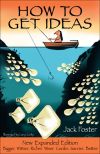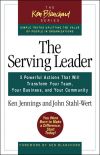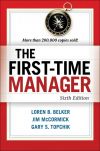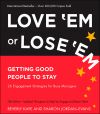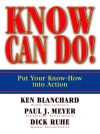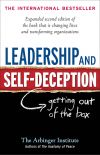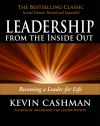Правообладателям!
Представленный фрагмент книги размещен по согласованию с распространителем легального контента ООО "ЛитРес" (не более 20% исходного текста). Если вы считаете, что размещение материала нарушает ваши или чьи-либо права, то сообщите нам об этом.Читателям!
Оплатили, но не знаете что делать дальше?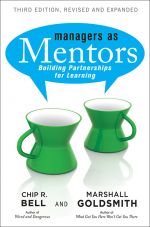
Текст бизнес-книги "Managers As Mentors. Building Partnerships for Learning"
Автор книги: Marshall Goldsmith
Раздел: Зарубежная деловая литература, Бизнес-книги
Возрастные ограничения: +12
Текущая страница: 1 (всего у книги 1 страниц)
Chip R. Bell, Marshall Goldsmith
Managers as Mentors
Praise for the third edition of Managers as Mentors
“Managers as Mentors is the must-read for leaders who value innovation, growth, and progress – all treasured by-products of those learning organizations where leaders mine talent.”
– Vijay Govindarajan, coauthor of the New York Times bestseller Reverse Innovation and Professor of International Business, Tuck School of Business, Dartmouth University
“Companies today tell their managers ‘You need to mentor.’ Often left hanging is the question of how. Chip Bell and Marshall Goldsmith fill in the blanks by offering a user-friendly handbook that shows busy managers how to effectively mentor their people. Essential and full of practical wisdom.”
– Sally Helgesen, author of The Female Advantage and The Web of Inclusion and coauthor of The Female Vision
“Managers as Mentors outlines simple, easy-to-follow steps so that the mentoring role becomes comfortable and doable – even for the busiest managers.”
– Beverly Kaye, coauthor of Help Them Grow or Watch Them Go and the international bestseller Love ’Em or Lose ’Em
“As captain of the ‘best damn ship in the US Navy,’ I learned that the high-performance sailors typically had effective mentors. Wish I’d had this book then! I’d have given a copy to all my leaders.”
– Mike Abrashoff, author of the New York Times bestseller It’s Your Ship
“The concept of this book’s brilliance is that every leader must become a mentor to his or her employees. Buy the book and find out how.”
– Jeffrey Gittomer, author of the New York Times bestsellers The Little Gold Book of YES! Attitude and The Little Red Book of Selling
“A good manager makes you want to do a better job; a great manager makes you want to be a better person. This book will help you become the mentor you always wanted and honor the terrific ones you had.”
– Mark Goulston, author of the international bestseller Just Listen and coauthor of Real Influence
“The single most important action you can take to advance your career is to partner with a great mentor. Imagine how far you could go with two great mentors. In Managers as Mentors, renowned leadership experts Chip Bell and Marshall Goldsmith serve as sage mentors as you learn how to be a great one yourself.”
– Bill Treasurer, author of Leaders Open Doors and Courage Goes to Work
“Managers as Mentors doesn’t miss a beat and only gets better with time. This third edition, structured around the SAGE model, is sage in the wisdom, experience, and stories it imparts to new and experienced mentors alike.”
– Dr. Lois J. Zachary, author of The Mentor’s Guide, The Mentee’s Guide, and Creating a Mentoring Culture
“Managers as Mentors provides the framework for developing emerging mentors and passing on the torch of leadership from person to person, one relationship at a time.”
– Marianna Grachek, President and CEO, American College of Health Care Administrators
“In the movies (and books), rarely is the remake as good as the original. That is not the case here! Take an important topic and add two brilliant and respected practitioners and what you get is this book. I read the first edition and loved it. Now, this revised third edition with illuminating additions is better than ever. If you want to help individuals (and your organization) reach anything close to their potential, read and apply this book. Start with yourself, and then share it widely. Thanks, Chip and Marshall, for a valuable addition to the learning leaders’ library.”
– Kevin Eikenberry, author of Remarkable Leadership
“I can’t imagine any two people on this planet better equipped to take on this subject than Marshall and Chip. For those seeking advice in building successful mentoring partnerships, this is your book.”
– Gordon Peters, Founding Chairman and CEO, Institute for Management Studies
“The book managers everywhere have been waiting for: a clear and practical guide to tapping talent in their organizations. If you ever wondered what managers in ‘learning organizations’ are supposed to be doing, here’s your answer.”
– Nancy K. Austin, coauthor (with Tom Peters) of A Passion for Excellence
“Continual learning is a key to effective leadership because no one can know everything there is to know. Managers as Mentors is a practical yet powerful book for helping leaders make continual learning a valuable addition to their strategy.”
– Mike Krzyzewski, Head Coach, Duke University Men’s Basketball, 2010 NCAA Champions
“Mentoring is the highest of the teaching arts, and in this new edition of Managers as Mentors Chip Bell and Marshall Goldsmith have skillfully crafted the essential handbook for all those who are trusted advisors to aspiring leaders.”
– Jim Kouzes, coauthor, The Leadership Challenge and Executive Fellow of Leadership, Leavey School of Business, Santa Clara University
“Managers as Mentors will be the indispensable handbook of managers/leaders across the sectors.”
– Frances Hesselbein, President and CEO, The Frances Hesselbein Leadership Institute and former CEO of the Girls Scouts of the USA
Beginning Our Journey
What is mentoring? At its most basic level, it is simply the act of helping another learn. However, the relationship between helper and helpee changes significantly when performed as a learning partnership rather than the traditional teaching “parentship” (master teaches apprentice).
The concept of mentoring as a learning partnership is one rather foreign to many. They rely on the stereotypical approach, using their expertise to teach rather than facilitate; demonstrate instead of enabling discovery. Lecturing to their protégés, they leave them temporarily capable but unwise in the long run. What comes from a capability-adding approach is only compliance; however, what emanates from a wisdom-building approach is creativity – the foundation of innovation. Competitive organizations today need “learning entrepreneurs.” Today, curiosity almost always trumps conformity.
Words like “mentor” and “coach” are sometimes used to mean the same thing. Here is our distinction: Coaching is a part of the leadership role specifically aimed at nurturing and sustaining performance. Mentoring is that part of the leadership role that has learning (competence, proficiency, skill, know-how, wisdom) as its primary outcome. Granted, learning impacts performance, and that in turn impacts the accomplishment of important goals. You will encounter this definition more than once.
The words we use for the players in the mentoring partnership are chosen more for convenience than for any other reason. “Mentors” are people (especially leaders) who engage in deliberate actions aimed at promoting learning; “leader,” “manager,” or “coach” would serve as well. Mentors do not have to be in a superior power position. One might easily be mentored by someone who possesses the needed skill or competence but is several levels below in the pecking order.
Some organizations find the label “mentor” to have special negative baggage, often the result of ill-fated mentoring programs. “Learning coach” is often a solid substitute. Likewise, “protégé” refers to the primary beneficiary of the mentoring effort; “associate,” “subordinate,” “colleague,” “mentee,” “partner,” or “follower” could be used. As long as we are clear on whom we mean, the labels can be changed to fit individual preferences and situations.
The main thing to remember is that this book is grounded in a partnership philosophy. It has no secrets aimed at making you look good to an unknowing subordinate, and we hope you will share it with your colleagues and associates and protégés. The more you know about how to mentor, the better the mentoring relationship will work for you. The same is true for the protégé. Some have found discussing the book helpful in improving the process of mentoring. Do what works for you.
Managers As Mentors, ReVISITED
We are big fans of new. We rarely go to the same restaurant twice, even if it was a great experience. The concept of a time-share – returning each summer to the same condo – leaves us absolutely cold. Why, we won’t even eat leftovers unless the only other option is to skip a meal!
This is the third edition of this book. You would think we would abhor the idea of spending time on the “leftover” version of a book. But we were excited by the opportunity! This edition is not a warmed-over version of yesterday’s dish, served up with a different sauce on the side. We think you’ll discover it has enough new and different ingredients not to be considered a leftover at all; rather, it is a completely new experience.
This new version is different in a number of ways. There are many chapters in this edition not found in the first or second. We have learned a lot both from the feedback of readers of the second edition and from participants in the mentoring workshops we have conducted and keynote speeches we have delivered. They helped us crystallize our thinking and enabled us to get a lot clearer on concepts that were somewhat vague in the second edition. We are grateful for the learning they provided us.
You will discover soon that Managers as Mentors is crafted around a mnemonic – SAGE – that forms the structure of the mentoring experience as we see it. Surrendering (S) is all about actions that make mentoring a power-free experience. We have learned that power, authority, and command – or at least the protégé’s perception of these traits in the mentor – can doom the mentoring experience to a perfunctory dialogue … sans risks, sans spirit, and sans discovery.
Accepting (A) in the SAGE model focuses on the value of a safe, nontoxic relationship. When the protégé believes he or she is in a relationship that is not dangerous, growth-producing risk and experimentation are more likely to occur. The perception or prediction of danger is related not to physical harm but rather to the emotional damage caused by rebuke, judgment, or criticism – all of which yield a loss of protégé self-esteem in front of an important person. Why is this important? Without risk there is no learning; without experimentation there is no progress.
Gifting (G) is positioned as the main event in mentoring. Many mentors start their mentoring relationships with a gift of advice, feedback, or focus. However, when offered as the first step in the relationship, the act of bestowing such gifts risks their being at best undervalued, at worst ignored, resisted, or rejected. If Gifting follows Surrendering and Accepting, it is more likely to be experienced by the protégé as a sincere gesture and a valued contribution worthy of attention, tryout, and effort.
Extending (E) in the SAGE is about the creation and nurturance of the protégé as a self-directed learner. It is also about ways to extend the learning of the protégé beyond his or her relationship with the mentor. Essentially, it is shepherding the transfer of learning.
Why Mentoring Is Important … Today
Organizations scramble to attract and retain skilled employees. Mentoring can be a powerful weapon useful in winning the war for talent. And both the flattening of organizations and the transformation of the role of boss have left many managers in an identity crisis. Having risen up the hierarchy by virtue of their command and control skills, they enter a world where bossing is now about coaching and partnering. This book offers a new perspective on roles and competencies for bosses as an alternative to what it has meant historically to be in charge.
Organizations have always operated in a competitive arena. Whether vying for a share of an economic market, a share of the customer’s loyalty, or a share of the resources doled out by some governing body, organizations operate in a contest mode. In today’s race, the winners are those that prove themselves more adaptive, more innovative, and more agile. These are the organizations populated by employees who are always learning, led by managers who are always teaching. So at a macro level, this book is about achieving organizational success.
When Managers as Mentors first came out, the concept of the “learning organization” was new and popular. Peter Senge was the new management guru, and his groundbreaking best-seller, The Fifth Discipline, was required reading for all contemporary, forward-thinking executives. We have today moved past the fad stage of a learning organization.11
Peter Senge, The Fifth Discipline: The Art and Practice of the Learning Organization (New York: Doubleday, 1990).
[Закрыть] The landscape of enterprise now is shaped by the dearth of talent, the pace of change, and the transformation of what it means to be in charge – all operating against the backdrop of a challenging economy. This new landscape has put “helping employees grow” at the top of the list of critical success factors for all managers. Consequently, this book is more important today than it was when it first appeared in hardback in the fall of 1996.
As mentoring has grown in importance since then, so have the specifications for mentoring tools. Managers today want proficiency without having to buy into a program. They seek helpful resources and techniques, not hindering rules and policies. Explorations of philosophy and theory might be tolerated after hours, but in the middle of challenge and the heat of contest, managers shun any instruction not immediately transferable to their everyday practice.
Mentoring as an Art
The mentor is a teacher, a guide, a sage, and foremost a person acting to the best of his or her ability, in a whole and compassionate way in plain view of the protégé. No greater helping or healing can occur than that induced by a model of compassion and authenticity. Mentoring is about being real, being a catalyst, and being sometimes a kind of prophet. It is therefore far more art than science. It is about personal power, not expert or role power. The most powerful and most difficult part of mentoring is being who you are.
This is not to imply that a mentor must be some kind of super-hero without flaws, doubts, or the capacity for making mistakes. Fundamentally, mentoring is about growing – mentors growing with protégés, protégés growing with mentors. The core of a mentoring relationship is more about a mutual search than about imparting wisdom. As a collective pursuit, mentoring works best when mentors are focused on building, not on boasting.
The anthropologist Carlos Castaneda used the word “magic” to describe his unique mentoring relationship with the Yaqui medicine man Don Juan – and truly there is a magical quality to the mentoring process when it takes on a life of its own and leads mentor and protégé through an experience of shared discovery.22
Carlos Castaneda, The Teachings of Don Juan: A Yaqui Way of Knowledge (Berkeley: University of California Press, 1968).
[Закрыть] The challenge of helping another see things in a new way has had many labels down through the centuries. Biblical writers used fishing analogies to capture the spirit of mentoring magic and told of removing scales from eyes. The philosopher Ram Dass referred to it as “a dance.”33
Ram Dass (Richard Alpert), The Only Dance There Is (Garden City, NY: Anchor Press, 1974).
[Закрыть] Buddha said, “One should follow a man of wisdom who rebukes one for one’s faults, as one would follow a guide to some buried treasure.”
Mentoring magic cannot be a solo performance. It is not a one-way, master-to-novice transaction. To be effective and lasting, it must be accomplished through a two-way relationship – the synchronized efforts of two people. The synchrony and synergy of mentoring are what give it a dance-like quality. They are also what make it magical.
This is not the first book on mentoring – nor the last. But from what we have seen, it is the only one we know of that is grounded in a true partnership philosophy. Our take on mentoring with a partnership philosophy is this: assume that all your future employees will be independently wealthy, headstrong, purpose-seeking volunteers who love to acquire learning but hate to surrender liberty.
This book is also about power-free facilitation of learning. It is about teaching through the power of consultation and collaboration rather than constriction and assessment. It views learning as an expansive, unfolding process rather than an evaluative, narrowing effort. It is a song about unfolding – one in which the last few stanzas have yet to be written. It is the instruction book on how to perform synchronized magic.
This is not a philosophy book, although it is grounded in very specific convictions: that the principal goal of mentoring is to create a self-directed learner, that the primary tool for learning is discovery, and that the most effective context for reaching that goal is a learning partnership. This is a workbook, filled with ideas, suggestions, how-to’s, and resources. If it ends up dog-eared, underlined, and passed around, it will mean that we have succeeded in making it a practical book – perhaps even a fun book as well as a soul-searching one. It is intended to be a tool for a critical component of the leader’s responsibility – helping another learn and grow.
We wanted you to have a preview of coming attractions. Below are thumbnails showing the organization of the book.
Part 1: Mentoring Is …
Chapter 1: Panning for Insight: The Art of Mentoring outlines what mentoring is (and is not), describes mentoring traps to avoid, and offers perspectives on how to make the mentoring relationship effective. This chapter also provides an overview of the mentoring model used to structure the book.
Конец ознакомительного фрагмента.
Текст предоставлен ООО «ЛитРес».
Прочитайте эту книгу целиком, купив полную легальную версию на ЛитРес.
Безопасно оплатить книгу можно банковской картой Visa, MasterCard, Maestro, со счета мобильного телефона, с платежного терминала, в салоне МТС или Связной, через PayPal, WebMoney, Яндекс.Деньги, QIWI Кошелек, бонусными картами или другим удобным Вам способом.
Внимание! Это ознакомительный фрагмент книги.
Если начало книги вам понравилось, то полную версию можно приобрести у нашего партнёра - распространителя легального контента ООО "ЛитРес".Правообладателям!
Представленный фрагмент книги размещен по согласованию с распространителем легального контента ООО "ЛитРес" (не более 20% исходного текста). Если вы считаете, что размещение материала нарушает ваши или чьи-либо права, то сообщите нам об этом.Читателям!
Оплатили, но не знаете что делать дальше?